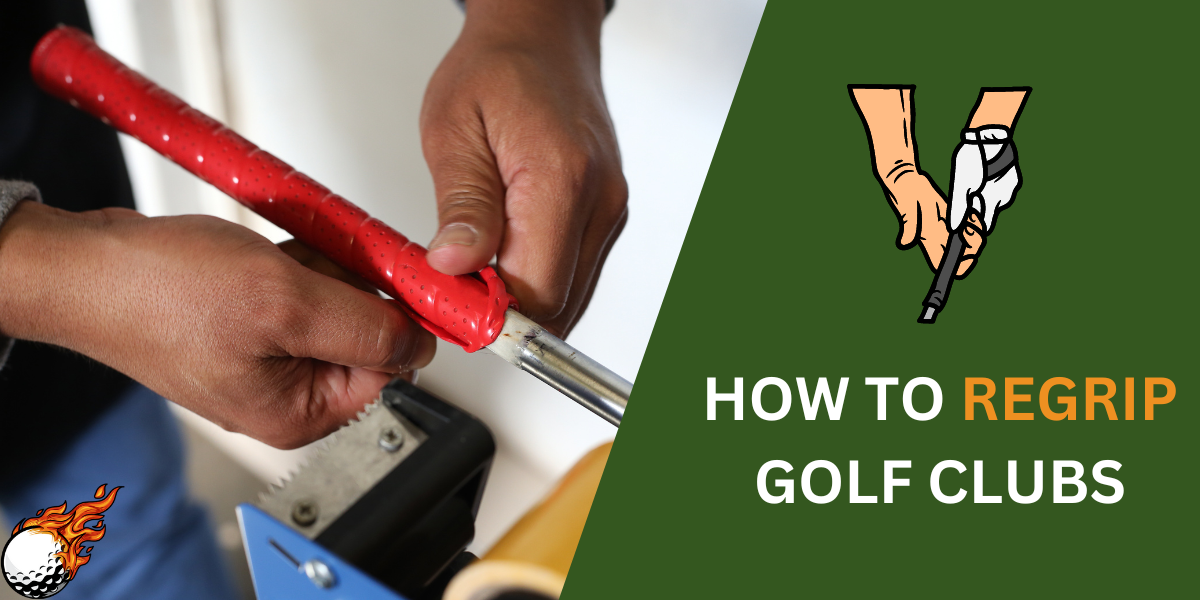
Are you feeling overwhelmed by the thought of stepping onto a golf course for the first time? You’re not alone. Many beginners find the world of golf quite daunting with its intricate rules and numerous techniques. But what if you could demystify the game, making that first step more accessible and enjoyable? The key to unlocking the joy of golf lies in understanding its basics – from how to hold a golf ball correctly to confidently navigating the expanse of a golf course. This guide will arm you with 39 essential techniques explicitly tailored to golf for beginners in 2024, ensuring your golfing journey starts on the right foot.
The game of golf can seem inaccessible and complex to beginners, with its unique language and a vast array of techniques and etiquette to master.
Without a clear understanding or guidance, many novices feel lost and intimidated by more experienced players, making their initial foray onto the golf course less enjoyable.
Our comprehensive list of 39 techniques, curated explicitly for golf beginners in 2024, will equip you with the necessary skills and knowledge. We’ve got you covered, from mastering the perfect swing to understanding the game’s nuances. Let’s transform that apprehension into excitement, making your first golfing experience memorable and the start of a lifelong passion.
Key Takeaways
- Understand the Basics: Grasping the fundamental concepts of golf, including the correct way to hold a golf ball, is crucial.
- Navigate the Course: Gain confidence in exploring and understanding the layout and challenges of a golf course.
- Build Your Skills: Discover the essential techniques every beginner should know to improve their game in 2024.
Embark on your golfing journey with these insights and watch as the world of golf becomes not just accessible but also a source of endless enjoyment and challenge.
Looking for Golf Tips for Beginners?
Embarking on your golf journey can be as thrilling as it is daunting. Knowing where to start is critical with a sport as nuanced and rich in tradition as golf. From mastering the fundamentals of play to understanding the intricate rules that govern the game, every beginner has a pathway to improvement that is both challenging and rewarding. Below, we present 39 golf tips for beginners, each crafted to enhance your understanding, performance, and enjoyment of the game. These insights draw from personal experiences, aiming to offer practical advice that resonates with newcomers to the sport.

1. Selecting the Right Golf Clubs
Choosing golf clubs that suit your style and skill level is crucial. Beginners should start with a basic set that includes a driver, a couple of irons, a pitching wedge, and a putter. Lightweight clubs with larger heads can be more forgiving on mis-hits, making them ideal for those in the early stages of learning.
2. The Basics of the Golf Swing
The golf swing is a central principle for any golfer. A good swing starts with a perfect stance, a grip that feels comfortable yet firm, and a focus on swinging through the ball with a smooth, consistent motion. Remember, the power of a swing comes from the body, not the arms.
3. Understanding Golf Balls
Golf balls vary in design and performance. As a beginner, using softer balls can help with control and provide a better feel. Experiment with different balls on the driving range to find one that comments on your swing and playing style.
4. Familiarizing Yourself with Golf Courses
Each golf course offers a unique challenge. Beginners should spend time walking or driving the system before playing to get a sense of the layout, noting the locations of hazards, the shape of greens, and the best spots to aim for from the tee.
5. Golf Etiquette and Rules
Learning proper etiquette and the basic rules of golf is as essential as mastering physical skills. This includes understanding how to keep pace with play, when and where to take practice swings, and how to behave on the green. Familiarizing yourself with the rules can also help avoid common penalties.
6. Dealing with Penalty Strokes
Penalty strokes are part of the game, and understanding how to deal with them is essential. Whether it’s a one-stroke penalty for a ball that lands out of bounds or a two-stroke penalty for hitting the wrong ball, knowing the rules helps you make the right decisions on the course.
7. Choosing the Right Tee Box
The tee box you choose should match your skill level and driving distance. Most courses have multiple tees ranging from beginner to advanced. Starting from a tee that fits your story will make the game more enjoyable and help you score better.

8. The Importance of Practice Swings
Practice swings help you feel your swing before you hit the ball. They can also help you visualize the shot and adjust your stance, grip, and swing path accordingly. However, ensure your practice swings don’t damage the playing surface.
9. Learning from the Best Players
Watching how the best players approach the game can provide valuable insights. Whether it’s their strategy on the course, how they handle pressure, or their practice routines, there’s much to learn from tour players and experienced golfers.
10. Golf Equipment Maintenance
Caring for your golf equipment will prolong its life and improve your game. Regularly clean your clubs, check for wear on grips, and ensure your golf bag is organized so you can easily find what you need during play.
11. Mastering the Pitching Wedge
The pitching wedge is an essential club for beginners, ideal for short distances around 100 yards from the green. Learning to use it effectively can significantly improve your scoring. Practice hitting with a smooth, controlled swing to develop consistency and accuracy.
12. Navigating Sand Wedges in Greenside Bunkers
Greenside bunkers can be intimidating for beginners. A sand wedge is designed to lift the ball out with its wide sole and glide through the sand. The key is to hit the sand about an inch behind the ball, allowing the sand to push the ball up and out of the bunker.
13. Golf’s Central Principle: The Swing Arc
Understanding and maintaining a consistent swing arc is vital. The hook is the path your clubhead follows during the swing. Keeping it consistent helps with hitting the ball squarely and controlling its flight. Visualization and practice are your best tools for mastering this.
14. The Role of the Driving Range
The driving range is more than just a place to hit golf balls. It’s where you can work on every aspect of your game, from driving to short irons and wedges. Use this time to practice purposefully, focusing on specific targets and working on different shots.
15. Embracing Proper Etiquette
Golf is a game of etiquette and tradition. This includes knowing when it’s your turn to play, being ready to hit when it’s your turn, repairing divots and ball marks, and respecting the peace of the game by remaining silent during others’ shots.
16. Understanding the One Stroke Penalty
A one-stroke penalty often occurs for rule infractions like hitting out of bounds or into a water hazard. Knowing how to proceed under these rules—such as where to take a drop—can help keep your score down and speed up play.

17. The Significance of the Tee Box in Match Play
In match play, the tee box from which you play can be strategically chosen based on your opponent’s strengths and weaknesses. Playing from a tee that suits your game can give you an advantage in this head-to-head format.
18. Adjusting for Wind and Weather
Weather conditions can significantly affect your game. Learning to adjust your shot selection and club choice based on wind direction and strength is crucial. For instance, playing into a headwind requires a lower-trajectory shot with less spin.
19. The Two-Stroke Penalty and How to Avoid It
Two-stroke penalties typically occur for more severe infractions, such as hitting the wrong ball or moving a ball at rest. Familiarizing yourself with these rules can help you avoid unnecessary strokes on your scorecard.
20. Local Rules and Their Impact
Before playing a new course, always check if local rules are in effect. These can include protecting specific areas, drop zones for water hazards, or specific guidelines on obstructions. Knowing these can save you from potential penalties.
21. The Importance of the Player’s Ball Identification
Permanently mark your ball in a way that you can identify it. This is crucial in avoiding a penalty for playing the wrong ball, which is easily made but can cost you strokes.
22. Preparing for the Final Round
The final round of any tournament or casual play can be nerve-wracking. Preparation includes not just physical readiness but mental as well. Visualize your shots, plan your strategy for the course, and stay focused on one image at a time.

23. The Psychology of Stroke Play
Stroke play, unlike match play, requires a steady, consistent approach over the entire course of a round. Managing your mindset, focusing on consistency rather than aggressive sports, and knowing when to take risks are key strategies.
24. Golf Bag Essentials
Packing your golf bag with the right equipment and accessories can make your round more enjoyable. This includes clubs, balls, tees, a rain cover, a water bottle, snacks, and basic first aid. Being prepared means you can focus on your game.
25. Developing a Relationship with Playing Partners
Golf is often a social sport. Developing a good rapport with your playing partners can enhance the experience. Sharing tips, offering encouragement, and maintaining a good pace of play contribute to everyone’s enjoyment.
26. The Value of a Pre-Shot Routine
A consistent pre-shot routine helps settle nerves and prepares you mentally and physically for the shot. It can include visualizing the image, practicing swings, and setting your stance and alignment.
27. Dealing with Loose Impediments and Obstructions
They know how to deal with loose impediments (natural materials like leaves or twigs) and obstructions (artificial objects) on the course. The rules guide what you can move and how to take relief without penalty.
28. Managing Expectations in the Early Stages
In the early stages of learning golf, managing your expectations is crucial. Progress can be slow, and the learning curve is steep. Celebrate small victories and focus on gradual improvement rather than immediate success.
29. Learning from Every Round Played
Each round of golf, whether good or bad, offers learning opportunities. Reflect on your play, identify areas for improvement, and consider what strategies worked well. This reflection is critical to ongoing development.
30. The Mental Game of Golf

Golf is as much a mental challenge as it is physical. Developing mental resilience, focusing on positive outcomes, and managing frustration are essential skills that can improve your performance on the course.
31. Recognizing the Impact of Ball Ends
Where your ball ends up after each shot significantly affects your next move; pay attention to the lie, the terrain, and potential hazards. This awareness will help you choose the right club and shot type for your situation.
32. Learning from Many Golfers
Observing and playing with golfers of various skill levels can offer valuable lessons. Notice how they approach different situations, manage their game, and even how they recover from poor shots. There’s much to learn from the diversity of experiences.
33. The Journey from Tee to Green
Understanding the journey from the first tee to the final green is essential. Each hole offers a new challenge, requiring a mix of strategy, skill, and, sometimes, a bit of luck. Embrace each hole as an opportunity to learn and improve.
34. Overcoming Challenges in Greenside Bunkers
Greenside bunkers can be daunting. Focus on using your sand wedge, such as opening the clubface and aiming to hit the sand first. Practice is vital to gaining confidence in these tricky situations.
35. The Significance of Knee Height Drops
Recent changes to the rules now allow for dropping the ball from knee height. This rule is designed to maintain a specific level of randomness where the ball lands while being more lenient than previous drop procedures. Understanding and applying this correctly can be advantageous.
36. Avoiding Water Hazards and Penalty Areas
Water hazards and penalty areas are designed to test your skill and decision-making. Learning how to play around or over these areas without incurring penalty strokes is crucial. Sometimes, the safer play is the more imaginative play.
37. Respecting the Course and Fellow Golfers
Respect for the course and your fellow golfers is fundamental to golf. This means repairing the system, including fixing divots and ball marks, keeping the pace of play, and showing courtesy to others by remaining quiet during shots.
38. The Thrill of the Game
Remember, golf is an enjoyable game. While it’s natural to be competitive and strive for improvement, the joy of playing, the beauty of the courses, and the camaraderie among players make golf unique.
39. Continuous Learning and Improvement
Golf is a journey, not a destination. The best players in the world are always looking to improve and learn. Embrace the learning process, be open to advise and feedback, and enjoy the journey of improving your game.
Golf for beginners is an adventure filled with challenges, learning opportunities, and, most importantly, fun. Incorporating these 39 techniques into your approach sets the foundation for a rewarding and enjoyable golf experience. Whether perfecting your swing, understanding the game’s nuances, or simply enjoying the outdoors with friends, golf offers something for everyone. Happy golfing!

Why Is Getting Help as a Beginner Golfer a Must?
Embarking on the journey to play golf can be as daunting as exciting. Unlike any other sport, golf’s unique blend of technical skill, mental strategy, and physical demand requires a nuanced approach.
Golf Digest and other reputable sources consistently highlight the steep learning curve for beginners, underscoring the importance of understanding golf rules, the role of a rules official, and the nuances of the game that aren’t found in any other sport.
For example, navigating the course, marked by white stakes, demands knowledge of how to hit the ball closer to the hole, interact with the ground, and manage the course’s natural and artificial obstacles.
Learning from most players and seeking advice from more experienced other players can significantly accelerate a beginner’s improvement.
The biggest thing that sets golf apart is its complexity and the rich tradition behind each element of play, from the significance of the white stakes marking boundaries to the etiquette of engaging with fellow players and officials.
This is why getting help, whether through formal lessons or informal tips from seasoned golfers, is essential for anyone looking to make their mark on the course.
Frequently Asked Questions
What equipment do I need to start playing golf?
To begin playing golf, you’ll need a basic set of clubs, including a driver, putter, irons, and a wedge. A golf bag, balls, tees, and comfortable, appropriate clothing for the course are also essential. Over time, you can add more specialized clubs, like a sand wedge or hybrid, to your set as your skills develop.
How do I know which golf club to use for different shots?
Choosing the right club depends on the distance to the hole and the shot you need to make. Generally, use woods for long-distance shots from the tee or fairway, irons for mid-range shots and precision work, and wedges for short-range shots around the green. The putter is used on the green for rolling the ball into the hole.
What are the basic rules of golf I should know?
Some basic golf rules include playing the ball as it lies, playing the course as you find it, and doing what is fair if you can’t do it air. Familiarize yourself with how to count strokes correctly, penalty rules for balls in hazards or out of bounds (marked by white stakes), and the etiquette of playing in turn and maintaining pace.
How can I improve my golf swing?
Improving your golf swing involves practice and possibly lessons from a professional. Focus on mastering the basics: grip, stance, and posture. Practice your swing to create a smooth, controlled motion that consistently makes good contact with the ball. Video analysis and feedback from experienced players or coaches can also be constructive.
Is it essential to know the etiquette of golf?
Yes, understanding and following golf etiquette is crucial. It includes respecting other players by not disturbing their play, taking care not to damage the course, and keeping up with the pace of play. Proper etiquette ensures that all players can enjoy their round and is an integral part of the game’s tradition and spirit.










